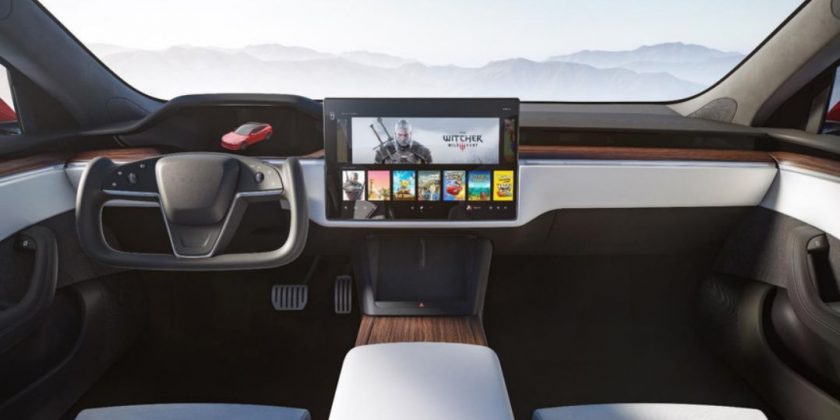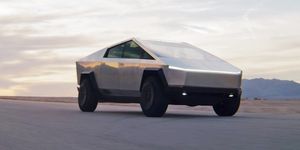Tesla’s surprise reveal of a yoke-shaped steering wheel for the updated Model S and Model X caught the EV world a little off guard, even if the changes inside the cabin were otherwise evolutionary. The vertical center screen was replaced with a horizontal one, and a new and smaller central screen was added for the benefit of rear-seat passengers in the Model S, with Tesla opting not to introduce individual screens into the seat backs for rear-seat passengers. The sedan also received some minor exterior upgrades below the belt line, changes that might not be noticeable unless you already own one.
The main event, however, was the option of a yoke-style steering. The wheel alternative certainly looks futuristic and may well be legal in the U.S., absent a contrary NHTSA rule, but it may not be all that practical, especially for those who have not driven a car with this setup before (we imagine that’s the vast majority of drivers).
It’s at this point some will be tempted to point out that plenty of race cars employ steering systems of this type, and that is true—but it ignores the actual steering ratios used in, say, Formula 1 and the amount of rotation that its drivers actually need in a typical race. Race drivers don’t do much parallel parking or need to turn through regular low-speed intersections, at least not while in a race car—that’s where the different ratios start to matter.
If you’re familiar with F1 and have watched enough in-cockpit video feeds, you’ll note that the amount of steering input required in F1 cars is actually very limited compared to a road car that you buy from a dealership. Even going around hairpins, F1 drivers typically need to turn the wheel about one third of a full rotation, permitting the drivers to keep their hands on their original positions on the handles. Regripping just isn’t an option. What you certainly don’t see in F1 cars are drivers making one or two complete rotations of the wheel, even when the car is spinning out of control. That’s because the steering just isn’t geared for that.
In the video above, observe that in order to make a right turn at a pit-lane speed, Daniel Ricciardo only needs to turn the steering wheel about 140 degrees, and does so without regripping.
Compare that to what’s needed in a car that you currently own and drive to work. In order to make a right or left in traffic you need to make about one complete rotation of the steering wheel. Add a U-turn at slow speed, and you’ll be looking at about one and a half rotations. Or do a three-point-turn in place, rotating the wheel from lock to lock, and you’ll find that it’s about two and a half to three complete rotations.
Unless Tesla has drastically altered the steering ratio, drivers will still need to spin the yoke to complete such normal driving tasks. Grabbable surfaces will be at a premium, because most drivers will instinctively reach for the top of the steering wheel to shuffle-steer… of which there is none. Even the flat bottom won’t help much because it’s still not where they’ll expect it to be.
Of course, there is one group who might find this steering setup very natural, having been exposed only to yoke-style steering: young, as-yet-unlicensed folks raised on racing games. It’s also a demographic largely unlikely to be getting their first cars in the form of an all-new Tesla Model S. And even for those who do, they’ll have to adjust to having to spin the yoke two and a half times from lock to lock.
Would you option a car with a yoke-style steering wheel? Let us know in the comments below.
Source: Read Full Article




